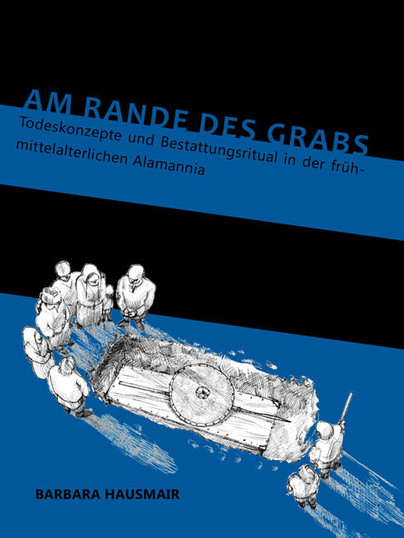
Format: Paperback
Pages: 250
ISBN: 9789088902956
Pub Date: 07 May 2015
Imprint: Sidestone Press
Description:
The original circumstances in which archaeological remains came into being are crucial for the interpretation of the material record. Burials are first and foremost a result of a very traumatic event in a society – the death of one of its members. It is due to this context that burials represent a primary source for understanding past societies’ attitudes towards death.
Barbara Hausmair traces death concepts and their influence on mortuary rituals in early medieval communities in what is today known as southwest Germany. Using the cemeteries of Bad Mingolsheim, Horb-Altheim and Weingarten as case studies, the author compares archaeological patterns based on grave goods and grave arrangements with anthropological data on age, sex, pathologies, trauma and migration patterns of the deceased. By connecting the observed patterns with social theories on human death behaviour, Hausmair dissects the complex network of the burial communities’ social structures, death concepts and the newly constructed identities of the dead in the afterlife. Her thanatological approach provides original insights into the relationships between burial practices and ideas about death in Merovingian-period Alamannia by sensibly combining theoretical considerations with a thorough analysis of archaeological material. TEXT IN GERMAN.

Format: Hardback
Pages: 184
ISBN: 9781782978244
Pub Date: 01 May 2015
Illustrations: b/w and colour illus.
Description:
The Southampton brokage books are the best source for English inland trade before modern times . Internal trade always matched overseas trade. Between 1430 and 1540 the brokage series records all departures through Southampton’s Bargate, the owner, carter, commodity, quantity, destination and date, and many deliveries too.
Twelve such years make up the database that illuminates Southampton’s trade with its extensive region at the time when the city was at its most important as the principal point of access to England for the exotic spices and dyestuffs imported by the Genoese. If Southampton’s international traffic was particularly important, the town’s commerce was representative also of the commonplace trade that occurred throughout England. Seventeen papers investigate Southampton’s interaction with Salisbury, London, Winchester, and many other places, long-term trends and short-term fluctuations. The rise and decline of the Italian trade, the dominance of Salisbury and emergence of Jack of Newbury, the recycling of wealth and metals from the dissolved monasteries all feature here. Underpinning the book are 32 computer-generated maps and numerous tables, charts, and graphs, with guidance provided as to how best to exploit and extend this remarkable resource.An accompanying web-mounted database (http://www.overlandtrade.org) enables the changing commerce to be mapped and visualised through maps and trade to be tracked week by week and over a century. Together the book and database provide a unique resource for Southampton, its trading partners, traders and carters, freight traffic and the genealogies of the middling sort.
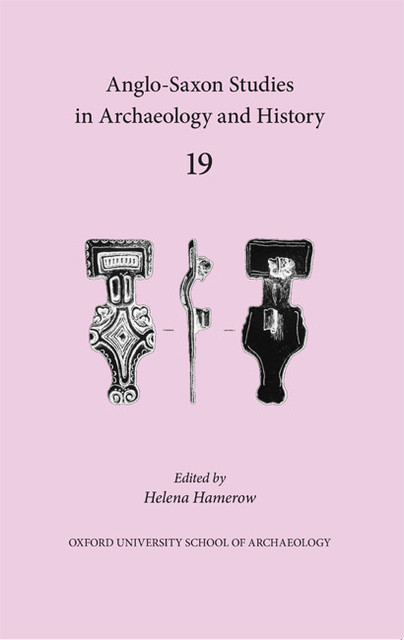
Format: Paperback
Pages: 220
ISBN: 9781905905348
Pub Date: 21 Apr 2015
Imprint: Oxford University School of Archaeology
Series: Anglo-Saxon Studies in Archaeology and History
Description:
Anglo-Saxon Studies in Archaeology and History is a series concerned with the archaeology and history of England and its neighbours during the Anglo-Saxon period.ASSAH offers researchers an opportunity to publish new work in an inter- and multi-disciplinary forum that allows for a diversity of approaches and subject matter. Contributions placing Anglo-Saxon England in its international context are as warmly welcomed as those that focus on England itself.

Format: Hardback
Pages: 200
ISBN: 9780854312993
Pub Date: 26 Mar 2015
Imprint: Society of Antiquaries of London
Description:
Roger, Bishop of Salisbury (1102–39, built Sherborne Old Castle within his episcopal estate at Sherborne, in north-west Dorset, in about 1122–35. The fortified palace was one of several major building projects undertaken by Bishop Roger; among the others were the rebuilding of Old Sarum cathedral and castles at Devizes and Malmesbury. Although Sherborne Old Castle was altered over the next four centuries, most of its original structural elements were retained until the buildings were slighted in 1645.
This report describes and analyses the information obtained from all the archaeological investigations undertaken at the castle since the early twentieth century, including those of A E Rawlence (1932), C E Bean (1932 to 1954), and the authors of this report, Peter White, then Inspector of Ancient Monuments, between 1968 and 1980and the late Alan Cook (1980–95).An analysis of the results, together with continuing historical research, have revealed much more about the major periods of the castle’s construction and use. It is now possible to describe and source more exactly the sophisticated design of Roger’s castle and the high quality of the craftsmanship employed in its construction and decoration; the later phases of development during the medieval period including the improvements to the castle’s defences and accommodation when held by the Crown between 1183 and 1354; the post-1357 alterations after the castle had been regained by Bishop Wyvil of Salisbury, and the important fifteenth-century building programme carried out by Bishop Thomas Langton. A much clearer assessment has been made of the impact of the works undertaken by Sir Walter Ralegh in his abortive attempt to remodel the castle as his country seat after he obtained the estate in 1592.Finally, although much of the fabric of the castle was destroyed following its surrender to a Parliamentary army in 1645, new documentary evidence and structural analysis has revealed how, during the eighteenth century, the Digby family developed and maintained the ruins as a romantic feature on the northern boundary of their landscaped park.
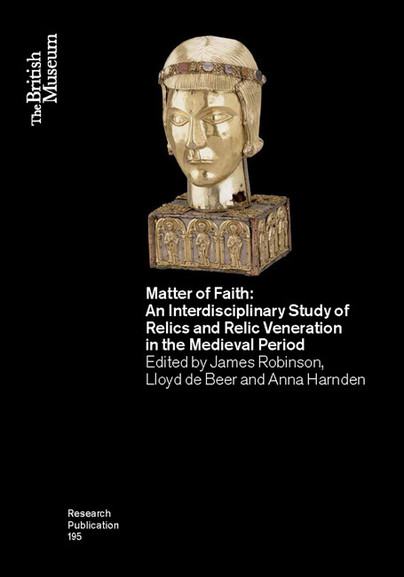
Format: Paperback
Pages: 206
ISBN: 9780861591954
Pub Date: 12 Mar 2015
Imprint: British Museum Press
Series: British Museum Research Publications
Description:
A landmark publication of essays resulting from the Treasures from Heaven conference at the British Museum, exploring the relationship between sacred matter and precious materials in the Middle Ages.

Format: Hardback
ISBN: 9781782978282
Pub Date: 12 Mar 2015
Imprint: Historic Towns Trust
Series: British Historic Towns Atlas
Description:
This atlas is the definitive account in maps and words of the historic royal towns of Windsor and Eton. There has never been an account of the history of Eton town, and although Windsor Castle has been much studied, the last historical account of the town of Windsor was published as long ago as 1858.The atlas contains high-quality and original maps of the two towns at key periods between the twelfth and nineteenth centuries.
At the heart of the atlas lies a detailed and minutely researched map showing all the major medieval and post-medieval features in the context of a large-scale map of the towns around 1870, using Ordnance Survey maps as a source. The substantial introduction to the history of these distinctive towns charts their development over eight centuries. The atlas is presented as a large-format, high-quality A3 folder, with maps and illustrations printed at A2, allowing clear detail to be seen.All the buildings, historic sites and streets named on the maps are comprehensively documented in a detailed gazetteer, covering the history of the sites and the many sources used in compiling the maps. The value of the atlas is enhanced by the inclusion of numerous colour illustrations, including early maps and views of the towns, many of them previously unknown.For the first time, new research by historians, archaeologists and cartographers has been brought together to compile this unique and original portfolio.
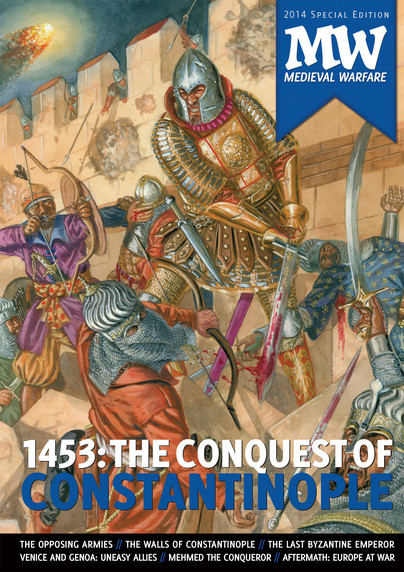
Format: Paperback
Pages: 80
ISBN: 9789490258108
Pub Date: 28 Feb 2015
Imprint: Karwansaray Publishers
Illustrations: 95
Description:
The 2014 Medieval Warfare Special issue is entirely dedicated - all 84 pages - to the Fall of Constantinople in 1453. It's like a normal issue, except it'll have more pages, more articles, more maps and more illustrations! Medieval Warfare Special 2014: 1453 - The Conquest of Constantinople with: - Eugenia Russel, Historical introduction – the destruction of the Oikoumeni - Kenneth Cline, Constantine XI – no room to maneuver - Murat Özveri, Mehmed ‘the Conqueror’ – A sultan of paradoxes - Nicola Bergamo, Venice, Genoa and Byzantium – difficult ‘trio' - Konstantin Nossov, The walls of Constantinople - Stephen Bennett & Nils Visser, The Conquest of Constantinople - Murray Dahm, Fallout – Contemporary reactions to the loss of Constantinople - Lukasz Rozycki, The fall of the Old World through the eyes of the “Polish janissary” - Raffaele D’Amato, The last defenders – the Roman army - Vassilis Pergalias, The final opponents – the Ottoman army - Ben Sheppard, Aftermath

Format: Paperback
Pages: 200
ISBN: 9781907588051
Pub Date: 05 Feb 2015
Imprint: East Anglian Archaeology
Series: East Anglian Archaeology Monograph
Description:
Botolph Bridge, now within urban Peterborough, lay beside an important crossing of the River Nene and once formed part of a well-known medieval vill, referenced in Domesday Book. Botolph Bridge was noted for its well preserved medieval earthworks but since the late 1980s these have gradually been destroyed by housing development. An earthwork survey carried out in 1982 amply demonstrated the complexity and importance of the site, showing a church and manorial complex with house plots strung out along an adjacent road and fields separated from the main settlement by a hollow way.
Excavation demonstrated that the manorial enclosure had replaced earlier house plots by c.1200. In the later 14th century, there was considerable investment by the manorial holders, the Draytons. A manorial farm was built above earlier fields, with stone buildings constructed around a courtyard including a farmhouse, dovecote and ancillary buildings. Within the manorial enclosure itself, further agricultural buildings were laid out. All these buildings had been abandoned by c.1600. The church, located just north of the excavation area, was finally demolished in 1695.

Format: Hardback
Pages: 300
ISBN: 9781907586286
Pub Date: 05 Feb 2015
Imprint: MOLA (Museum of London Archaeology)
Description:
The construction of a new shopping centre afforded MOLA the opportunity to investigate a 3.55ha site located between the north bank of the River Avon and the southern defences of Roman and later Bath. Extensive geoarchaeological work allowed the modelling and dating of the main stages in the evolution of this part of the Avon flood plain from at least the Late Devensian (23–11.
5ka BP). The pre-Holocene landforms can be related to the wider pattern of climate-driven landscape change. A very large lithic assemblage points to task-based activities on or immediately adjacent to the site in the Early and Late Mesolithic, but analysis indicates that the recovered scatters have been subject to post-depositional processes. Little evidence for the use of the flood plain in the Roman period was recovered, but the outer defences of the Anglo-Saxon burh were investigated and extramural activity of rural and perhaps popular religious character recorded. Following the Norman Conquest, major landscape reorganisation took place, with extensive quarrying, the construction of the earliest southern road out of the city, the laying out of burgage plots and creation of an artificial watercourse to serve as a mill race and perhaps flood defence. Occupation in the southern suburb is well represented from the mid 13th century and its character and development is reconstructed in a sequence terminating in two destructive events of the 20th century – the air raids of 1942 and the construction of the first Southgate shopping centre in the 1970s.

Format: Paperback
Pages: 60
ISBN: 9781907372940
Pub Date: 04 Feb 2015
Imprint: Paul Holberton Publishing
Illustrations: 40 colour illus.
Description:
Accompanying a focused display at The Courtauld Gallery that will bring together for the first time Pieter Bruegel the Elder’s only three known grisaille paintings – the Courtauld’s Christ and the Woman Taken in Adultery (which is barred from travel), The Death of the Virgin from Upton House in Warwickshire (National Trust) and Three Soldiers from the Frick Collection in New York – this book will examine the sources, function and reception of these three exquisite masterpieces. The panels will be complemented by prints and contemporary replicas, as well by other independent grisailles in order to shed light on the development of this genre in Northern Europe.Despite his status as the seminal Netherlandish painter of the 16th century, Pieter Bruegel the Elder (c.
1525–1569) remains an elusive artist: fewer than forty paintings are ascribed to him. Of these, a dozen are cabinet-sized. These small-scale works offer key insights as they often bear a personal significance for the artist and were sometimes given as gifts to friends and patrons. Presenting these works together for the first time is not only an extraordinary and unprecedented opportunity but it will be extremely revealing, considering their unusual nature in both Bruegel’s oeuvre and 16th-century art in general. Monochrome painting in shades of grey was a mainstay of Netherlandish art from the early 15th century, most often present on the wings of altarpieces and preparatory sketches for engravings. In contrast, Bruegel’s panels constitute one of the earliest and rare examples of independent cabinet pictures in grisaille, created for private contemplation and enjoyment. This seemingly austere type of painting has often been imbued with religious or political significance. On a purely artistic level, it enabled the painter to showcase his skill by limiting his palette. The publication, which includes a technical investigation of the three panels, will provide the opportunity to reassess the practical aspects of the grisaille technique and the many ways in which this effect was achieved. Indeed, Bruegel’s three monochromatic paintings display quite different techniques, raising the question of the painter’s intent. This is the latest in the series of books accompanying critically acclaimed Courtauld Gallery displays, following on from Collecting Gauguin (2013), Antiquity Unleashed (2013), Richard Serra (2013), A Dialogue with Nature (2014), Bruegel to Freud (2014) and Jonathan Richardson (2015).

Format: Paperback
Pages: 137
ISBN: 9781907586309
Pub Date: 02 Feb 2015
Imprint: MOLA (Museum of London Archaeology)
Description:
Archaeological investigations were carried out in 2006–9 on the north bank of the River Thames at Riverbank House, City of London, just upstream of the modern London Bridge and its medieval predecessor, in the heart of the medieval port. An extensive watching brief had taken place on the site in the early 1980s (the Swan Lane car park), but these new excavations were in undisturbed areas around the perimeter. A 2nd-century AD revetment and part of the late Roman riverside wall were recorded, while a sequence of timber revetments, some dated by dendrochronology, witness the growth of the medieval port from the 12th to the 15th centuries.
Fragmentary building remains relate to medieval and post-medieval tenements, and pipes from a 16th- or 17th-century ship’s pump were found reused as a drain. Characteristically, foreshore deposits and reclamation dumps infilling the medieval waterfronts produced many well-preserved finds, particularly leather and metal objects. The latter include tools, domestic items, cloth seals and a number of religious and secular badges. A rare and unusual find was a devotional openwork panel relating to the life and death of Thomas, Earl of Lancaster, who was executed on 23 March 1322 by Edward II. Remains of plants used in dyeing support the documented importance of the local cloth-finishing industry.
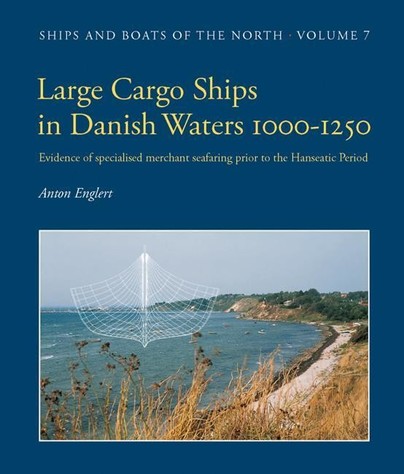
Format: Hardback
Pages: 378
ISBN: 9788785180537
Pub Date: 22 Jan 2015
Imprint: Viking Ship Museum
Series: Ships & Boats of the North
Illustrations: 240 illustrations
Description:
“A wealthy man in Denmark, citizen of the town of Schleswig, built a large ship at great expense. And the king of the country decided to join company and take part in the profits. And after he had made good half of the costs, he owned a corresponding part of the ship …”The medieval Hanseatic merchants are famous for their maritime trade network, which extended across Northern Europe from the 13th century onward.
The rare quote above sheds light on a less known period, beginning in the late Viking Age, when large, elegant cargo ships were built and sailed across the sea by Scandinavian merchants.This volume presents the earliest archaeological evidence for specialised merchant seafaring in Danish waters. The cargo ship-finds of Eltang Vig, Lynæs, Karschau and Haderslev are explored in detail in order to illuminate the technology and style of a dynamic age of maritime enterprise and cultural transformation.

Format: Hardback
Pages: 208
ISBN: 9781782978176
Pub Date: 08 Jan 2015
Illustrations: b/w and colour illustrations
Description:
Seals and their Context in the Middle Ages offers an extensive overview of approaches to and the potential of sigillography, as well as introducing a wider readership to the range, interest and artistry of medieval seals. Seals were used throughout medieval society in a wide range of contexts: royal, governmental, ecclesiastical, legal, in trade and commerce and on an individual and personal level. The fourteen papers presented here, which originate from a conference held in Aberystwyth in April 2012, focus primarily on British material but there is also useful reference to continental Europe.
The volume is divided into three sections looking at the history and use of seals as symbols and representations of power and prestige in a variety of institutional, dynastic and individual contexts, their role in law and legal practice, and aspects of their manufacture, sources and artistic attributes. Importantly and distinctively, the volume moves beyond the study of high status seals to consider such themes as the social and economic status of seal-makers, the nature and meaning – including reflections of deliberate wit and boastfulness – of specific motifs employed at various levels of society, and the distribution of seals in relation to the location of, for instance, religious institutions and along major routeways. In so doing, it sets out ways in which sigillography can open new pathways into the study of non-elites and their cultures in medieval society.
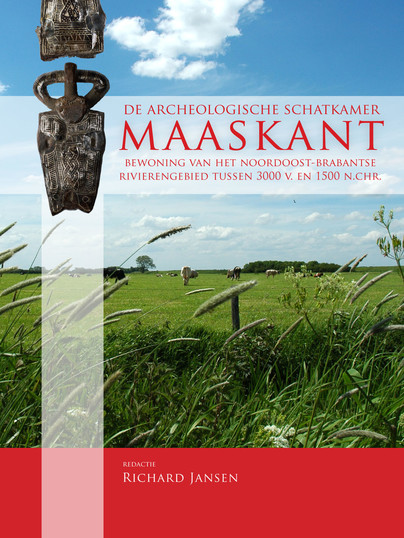
Format: Paperback
Pages: 468
ISBN: 9789088902253
Pub Date: 31 Dec 2014
Imprint: Sidestone Press
Description:
This books present papers on the archaeology of the region between the river Meuse and the city of Oss (Netherlands), locally known as the "Maaskant". The papers presented in this volume discuss the period from 3000 BC until 1500 AD. The wealth of archaeological data from this region indicated this part of the Netherlands was inhabited by early farmers already 5000 years ago.
The strategic location near the river did not only provide fertile grounds but also formed an intersection in transport and communication routes.

Format: Hardback
Pages: 964
ISBN: 9781891271205
Pub Date: 08 Dec 2014
Imprint: Celtic Studies Publications
Description:
What awaits us beyond the grave is perhaps the fundamental human mystery. Visionary accounts of the afterlife are attested long before the Common Era, and loomed large in the imaginative universe of early Christianity. The medieval Irish inherited and further transformed this tradition, producing vivid eschatological narratives which had a profound impact throughout Europe as well as being works of remarkable literary and spiritual power in their own right.
Under the headings ‘Soul and Body’, ‘The Seven Heavens’, ‘The Next World’, and ‘The Judgement and its Signs’, this book presents critical editions, with translation and commentary, of 26 eschatological texts from the Old, Middle, and Early Modern Irish periods, together with related material in Latin and Old English. Some of these works are here edited for the first time. Extended essays survey Irish eschatological literature a whole, and place it in its wider context; and the volume concludes with a comprehensive handlist of Irish eschatological compositions. This book consists of two volumes.
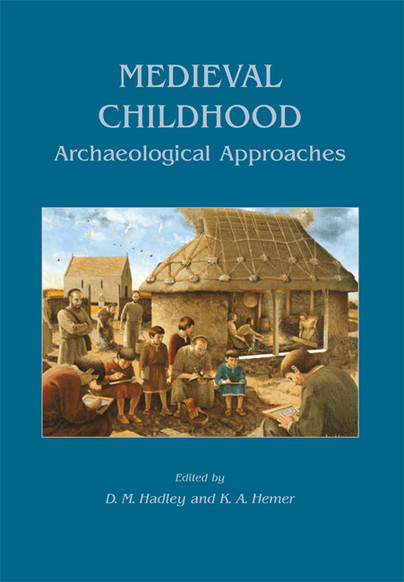
Format: Paperback
Pages: 160
ISBN: 9781782976981
Pub Date: 02 Dec 2014
Illustrations: b/w and colour illustrations
Description:
The nine papers presented here set out to broaden the recent focus of archaeological evidence for medieval children and childhood and to offer new ways of exploring their lives and experiences. The everyday use of space and changes in the layout of buildings are examined, in order to reveal how these impacted upon the daily practices and tasks of household tasks relating to the upbringing of children. Aspects of work and play are explored: how, archaeologically, we can determine whether, and in what context, children played board and dice games?
How we may gain insights into the medieval countryside from the perspective of children and thus begin to understand the processes of reproduction of particular aspects of medieval society and the spaces where children’s activities occurred; and the possible role of children in the medieval pottery industry. Funerary aspects are considered: the burial of infants in early English Christian cemeteries the treatment and disposal of infants and children in the cremation ritual of early Anglo-Saxon England; and childhood, children and mobility in early medieval western Britain, especially Wales. The volume concludes with an exploration of what archaeologists can draw from other disciplines – historians, art historians, folklorists and literary scholars – and the approaches that they take to the study of childhood and thus the enhancement of our knowledge of medieval society in general.
















